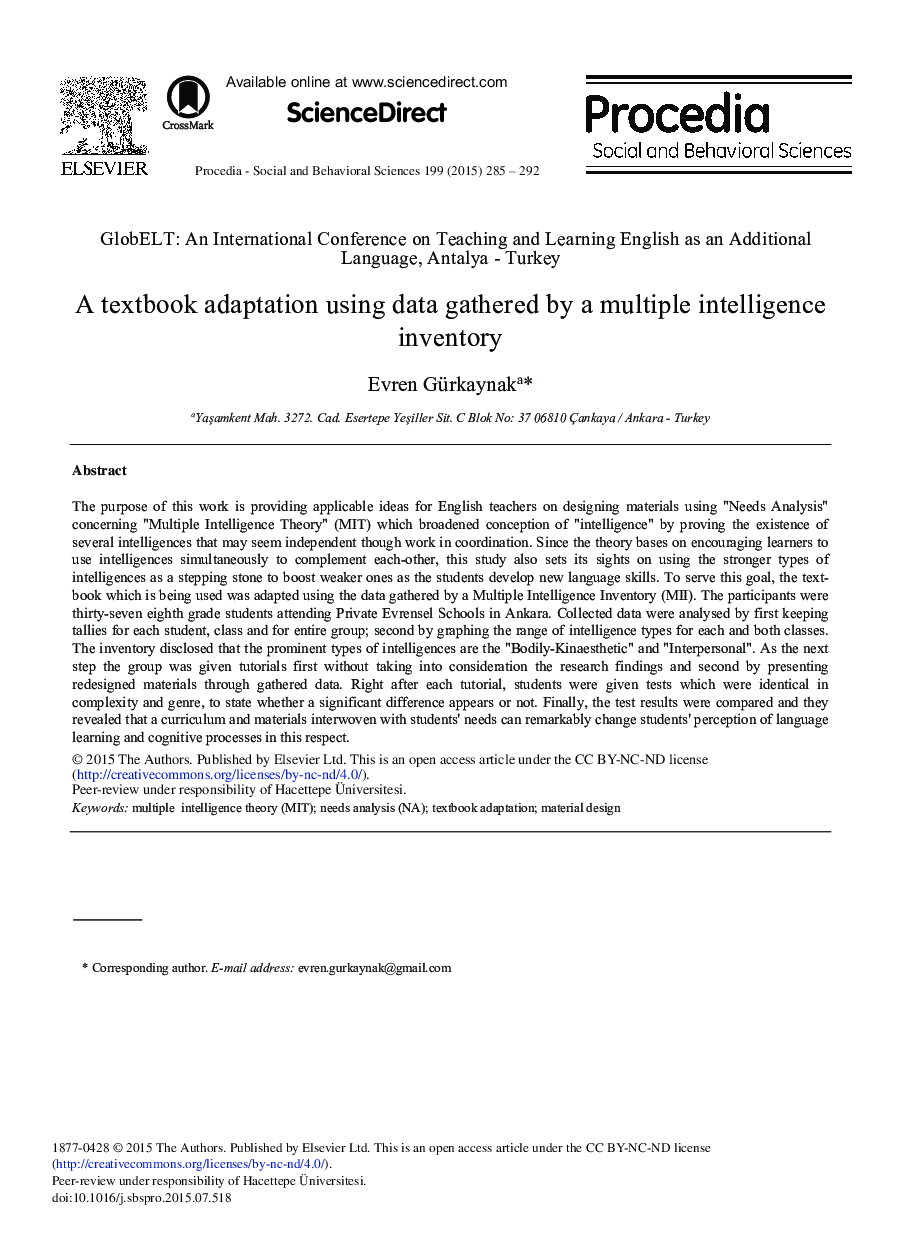| Article ID | Journal | Published Year | Pages | File Type |
|---|---|---|---|---|
| 1109787 | Procedia - Social and Behavioral Sciences | 2015 | 8 Pages |
The purpose of this work is providing applicable ideas for English teachers on designing materials using “Needs Analysis” concerning “Multiple Intelligence Theory” (MIT) which broadened conception of “intelligence” by proving the existence of several intelligences that may seem independent though work in coordination. Since the theory bases on encouraging learners to use intelligences simultaneously to complement each-other, this study also sets its sights on using the stronger types of intelligences as a stepping stone to boost weaker ones as the students develop new language skills. To serve this goal, the text-book which is being used was adapted using the data gathered by a Multiple Intelligence Inventory (MII). The participants were thirty-seven eighth grade students attending Private Evrensel Schools in Ankara. Collected data were analysed by first keeping tallies for each student, class and for entire group; second by graphing the range of intelligence types for each and both classes. The inventory disclosed that the prominent types of intelligences are the “Bodily-Kinaesthetic” and “Interpersonal”. As the next step the group was given tutorials first without taking into consideration the research findings and second by presenting redesigned materials through gathered data. Right after each tutorial, students were given tests which were identical in complexity and genre, to state whether a significant difference appears or not. Finally, the test results were compared and they revealed that a curriculum and materials interwoven with students’ needs can remarkably change students’ perception of language learning and cognitive processes in this respect.
